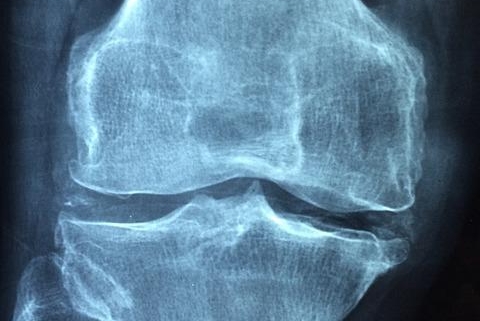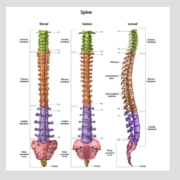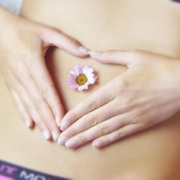7 Essential Tips to Safeguard Your Joints This Winter
As the winter chill sets in and the days grow shorter, it’s not just the temperature that drops—our joints can feel the brunt of the season too. Cold weather can exacerbate discomfort and stiffness, making it essential to take proactive measures to protect our bodies. Whether you’re an outdoor enthusiast eager to enjoy winter sports or someone who prefers cozying up indoors, safeguarding your joints is crucial for maintaining mobility and comfort. In this listicle, we’ll explore 7 essential tips that will empower you to keep your joints healthy and resilient throughout the winter months. From smart lifestyle choices to effective exercises, you’ll gain practical insights to help you navigate the season with ease and confidence. Let’s dive in and discover how to keep your joints feeling their best, no matter how frosty it gets outside!
1) Stay Active: Embrace low-impact exercises like swimming or yoga to keep your joints flexible and strong, even when the weather outside is frightful
Winter can be a challenging time for maintaining an active lifestyle, but incorporating low-impact exercises into your routine can make all the difference. Swimming is a fantastic option, as the buoyancy of water reduces stress on your joints while providing a full-body workout. Whether you prefer leisurely laps or engaging in water aerobics, the resistance of the water helps strengthen muscles around your joints, enhancing stability and flexibility. Yoga, on the other hand, promotes gentle stretching and balance, allowing you to improve your range of motion while also focusing on breath control and mindfulness. This holistic approach not only benefits your joints but also contributes to overall well-being during the colder months.
To keep your joints happy and healthy, consider the following low-impact activities:
- Aqua aerobics: Join a class for a fun social atmosphere while getting a great workout.
- Gentle Pilates: Focus on core strength and alignment to support your joints.
- Walking in water: A simple yet effective way to engage your muscles with minimal impact.
- Chair yoga: Perfect for those with limited mobility, offering flexibility and strength in a safe manner.
To help you choose the right activity for your needs, here’s a quick comparison of the benefits:
| Activity | Benefits |
|---|---|
| Swimming | Low impact, full-body workout, improves cardiovascular health |
| Yoga | Enhances flexibility, balance, and mental wellness |
| Aqua aerobics | Fun environment, social interaction, effective calorie burn |
| Chair yoga | Accessible for all levels, promotes relaxation and joint health |
2) Dress for Warmth: Layer up with appropriate clothing to maintain your body heat and protect your joints from the cold, which can exacerbate stiffness
When the winter chill sets in, it’s essential to dress in layers that provide warmth while allowing for mobility. Start with a moisture-wicking base layer that fits snugly against your skin. This layer will help keep sweat away from your body, which is crucial in preventing chills that can lead to stiffness in your joints. Next, add an insulating mid-layer, such as fleece or wool, which traps heat and keeps you cozy. top it off with a windproof and waterproof outer layer to shield yourself from the elements. Each layer plays a vital role in maintaining your body heat and protecting your joints from the biting cold.
Consider incorporating the following items into your winter wardrobe to maximize warmth and comfort:
- Thermal leggings or long johns – Perfect for added warmth under your pants.
- Layered tops – Opt for a mix of turtlenecks and long-sleeve shirts.
- Insulated gloves and hats – Essential for protecting extremities that are prone to cold-related stiffness.
- Warm, waterproof boots – Keep your feet dry and toasty to prevent joint discomfort.
To help you choose the right clothing, here’s a quick reference table of materials that provide warmth and flexibility:
| Material | Benefits |
|---|---|
| Merino Wool | Excellent insulation and moisture-wicking properties. |
| Fleece | Lightweight and warm, perfect for mid-layers. |
| Down | Incredible warmth-to-weight ratio, ideal for outer layers. |
| Softshell | Offers flexibility and protection from wind and light rain. |
3) Maintain a Healthy Weight: Keeping your weight in check can significantly reduce the strain on your joints, particularly in the knees and hips, making winter activities more enjoyable
Maintaining a healthy weight is crucial for joint health, especially during the winter months when cold weather can exacerbate discomfort. Carrying excess weight puts additional pressure on weight-bearing joints, particularly the knees and hips, which can lead to increased pain and reduced mobility. By keeping your weight in check, you can help alleviate this strain, allowing you to engage in winter activities like skiing, snowshoeing, or even leisurely walks in the snow without the fear of joint pain. Here are some effective strategies to help you manage your weight:
- Balanced Diet: Focus on incorporating whole foods such as fruits, vegetables, lean proteins, and whole grains into your meals. This not only provides essential nutrients for joint health but also helps in weight management.
- Portion Control: Be mindful of portion sizes, especially during the holiday season when rich foods are abundant. Using smaller plates can help control portions and reduce overeating.
- Stay Hydrated: Drinking plenty of water can help curb hunger and prevent overeating. Aim for at least 8 glasses a day, and consider herbal teas for added warmth during winter.
To further illustrate the impact of weight on joint health, consider the following table that highlights the additional pressure on joints based on weight:
| Body Weight (lbs) | Pressure on Knees (lbs) |
|---|---|
| 150 | 450 |
| 200 | 600 |
| 250 | 750 |
As shown, the pressure on your knees significantly increases with higher body weight. By focusing on maintaining a healthy weight, you not only protect your joints but also enhance your overall well-being, making winter activities more enjoyable and less painful.
4) Stay Hydrated: Don’t let the chilly weather fool you—drink plenty of water to keep your joints lubricated and functioning smoothly throughout the winter months
As the temperatures drop, it’s easy to overlook the importance of hydration. Many people mistakenly believe that they don’t need to drink as much water in winter as they do in the summer months. However, staying hydrated is crucial for maintaining joint health. Water not only helps lubricate your joints but also supports the overall functioning of your body. Aim to drink at least 8-10 cups of water daily, and consider incorporating hydrating foods into your diet, such as:
- Cucumbers
- Celery
- Oranges
- Watermelon
Additionally, be mindful of the signs of dehydration, which can include fatigue, dizziness, and dry skin—all of which can negatively impact your joint health. To help you keep track of your hydration, consider using a simple table to plan your daily water intake:
| Time of Day | Water Intake Goal |
|---|---|
| Morning | 2 cups |
| Midday | 3 cups |
| Afternoon | 2 cups |
| Evening | 1-3 cups |
By making a conscious effort to hydrate throughout the day, you can help ensure that your joints remain well-lubricated and ready to take on winter activities. Remember, even if the weather feels cold and you may not feel thirsty, your body still requires adequate water to function optimally.
5) Incorporate Joint-Friendly Foods: Nourish your body with anti-inflammatory foods like fatty fish, nuts, and leafy greens to support joint health and reduce discomfort
To keep your joints feeling their best during the chilly winter months, filling your plate with anti-inflammatory foods is essential. These nutrient-dense options not only provide your body with the fuel it needs but also help combat inflammation that can lead to joint discomfort. Consider incorporating the following foods into your diet:
- Fatty Fish: Rich in omega-3 fatty acids, varieties like salmon, mackerel, and sardines can significantly reduce joint pain and stiffness.
- Nuts: Almonds and walnuts are excellent sources of healthy fats and antioxidants, promoting joint health while providing a satisfying snack.
- Leafy Greens: Spinach, kale, and Swiss chard are packed with vitamins and minerals that help lower inflammation and support overall joint function.
To better understand how these foods contribute to joint health, here’s a quick look at their benefits:
| Food | Benefits |
|---|---|
| Fatty Fish | High in omega-3s, reduces inflammation |
| Nuts | Rich in healthy fats and antioxidants |
| Leafy Greens | Packed with vitamins that lower inflammation |
6) Invest in Proper Footwear: Choose supportive, well-cushioned shoes to provide stability and minimize the risk of slips and falls on icy surfaces
When the winter chill sets in, it’s crucial to prioritize your footwear choices. Opt for shoes that offer adequate support and cushioning, as these features can significantly enhance your stability on slippery surfaces. Look for designs that include a non-slip sole to grip the ice better and prevent those unexpected slips. Additionally, consider shoes with a high ankle or supportive structure to help keep your feet secure, reducing the risk of twisting an ankle. Remember, a well-fitted shoe can make all the difference in your overall comfort and mobility during the colder months.
Here are some key features to look for when selecting winter footwear:
- Waterproof materials: Keep your feet dry and warm.
- Insulation: Protect against the cold.
- Arch support: Reduce strain on your joints.
- Lightweight design: Easier to wear for extended periods.
Investing in the right pair of shoes not only helps in maintaining joint health but also enhances your confidence while navigating icy pathways. Take the time to choose footwear that complements your lifestyle and provides the necessary protection against winter hazards.
7) Listen to Your Body: Pay attention to any signs of discomfort or pain, and don’t hesitate to rest or modify your activities to prevent further strain on your joints
Being in tune with your body is crucial, especially during the colder months when joint discomfort can become more pronounced. Listening to your body means recognizing the subtle signs that indicate it’s time to slow down or adjust your activities. If you experience discomfort or pain, don’t ignore it; instead, take a moment to assess the situation. Consider these strategies:
- Identify Pain Triggers: Keep track of activities that exacerbate your discomfort.
- Rest and Recover: Prioritize rest days to allow your joints to recuperate.
- Modify Activities: Switch to lower-impact exercises if you notice strain.
Incorporating these practices into your routine can help prevent further strain and promote overall joint health. It’s also beneficial to consult with a healthcare professional if discomfort persists. They can provide tailored advice and treatment options. Here’s a simple table to help you remember the signs that may indicate you need to take a break:
| Sign of Discomfort | Action to Take |
|---|---|
| Sharp Pain | Stop the activity immediately |
| Stiffness | Incorporate gentle stretching |
| Swelling | Apply ice and rest |
| Fatigue | Allow for extra recovery time |
In Retrospect
As winter blankets the world in its frosty embrace, it’s essential to take proactive steps in safeguarding your joints against the chill. By incorporating these seven essential tips into your routine, you can maintain mobility, comfort, and overall joint health throughout the colder months. Remember, a little preparation goes a long way in ensuring that you can enjoy the beauty of winter without the burden of discomfort. So bundle up, stay active, and give your joints the care they deserve. Here’s to a winter filled with warmth, movement, and well-being!










Leave a Reply
Want to join the discussion?Feel free to contribute!